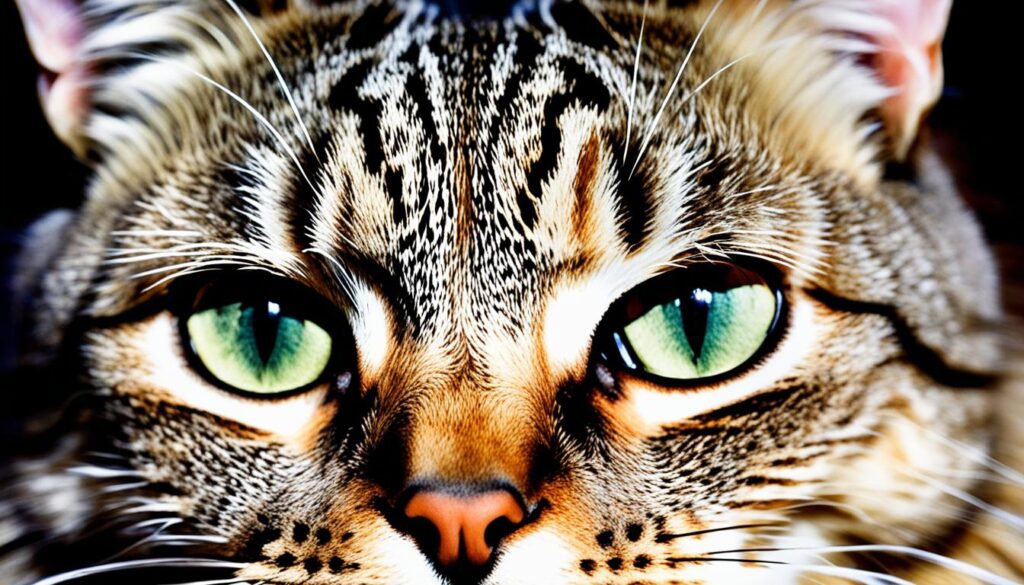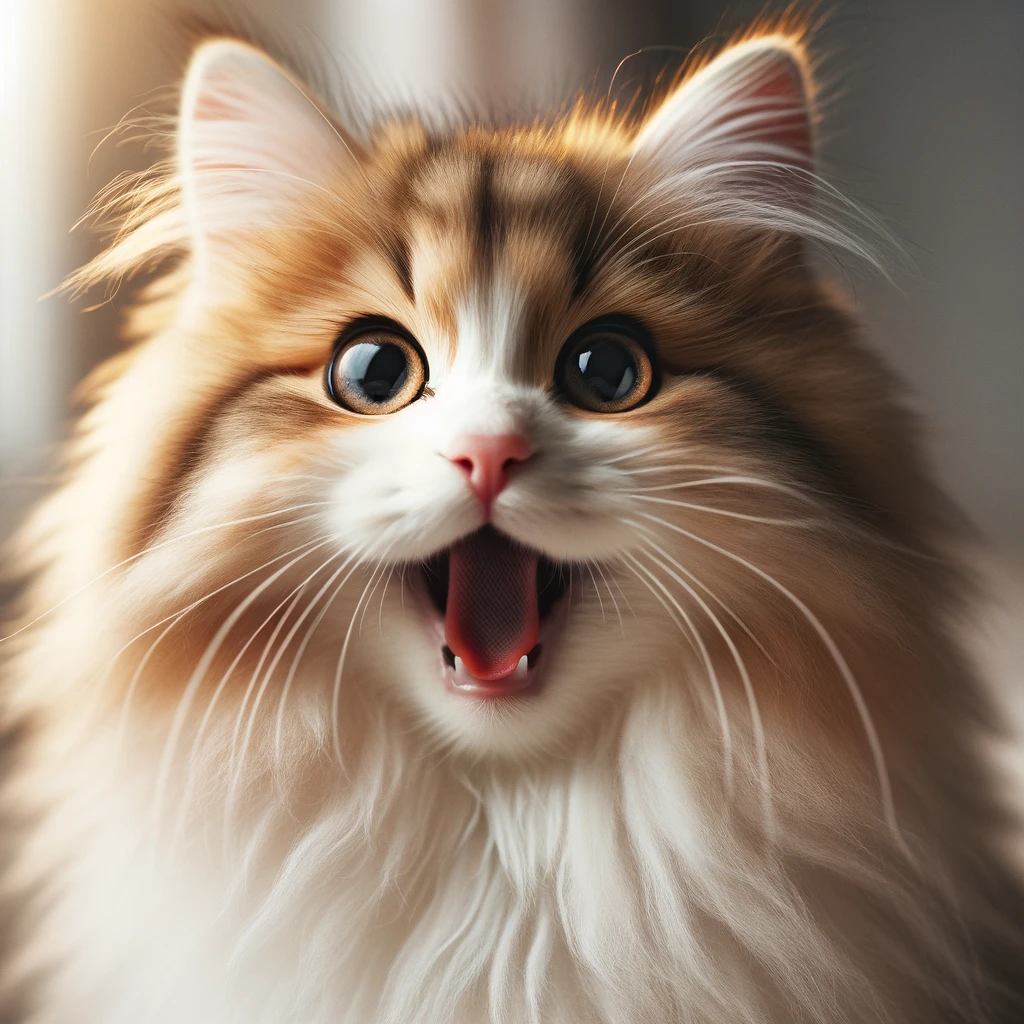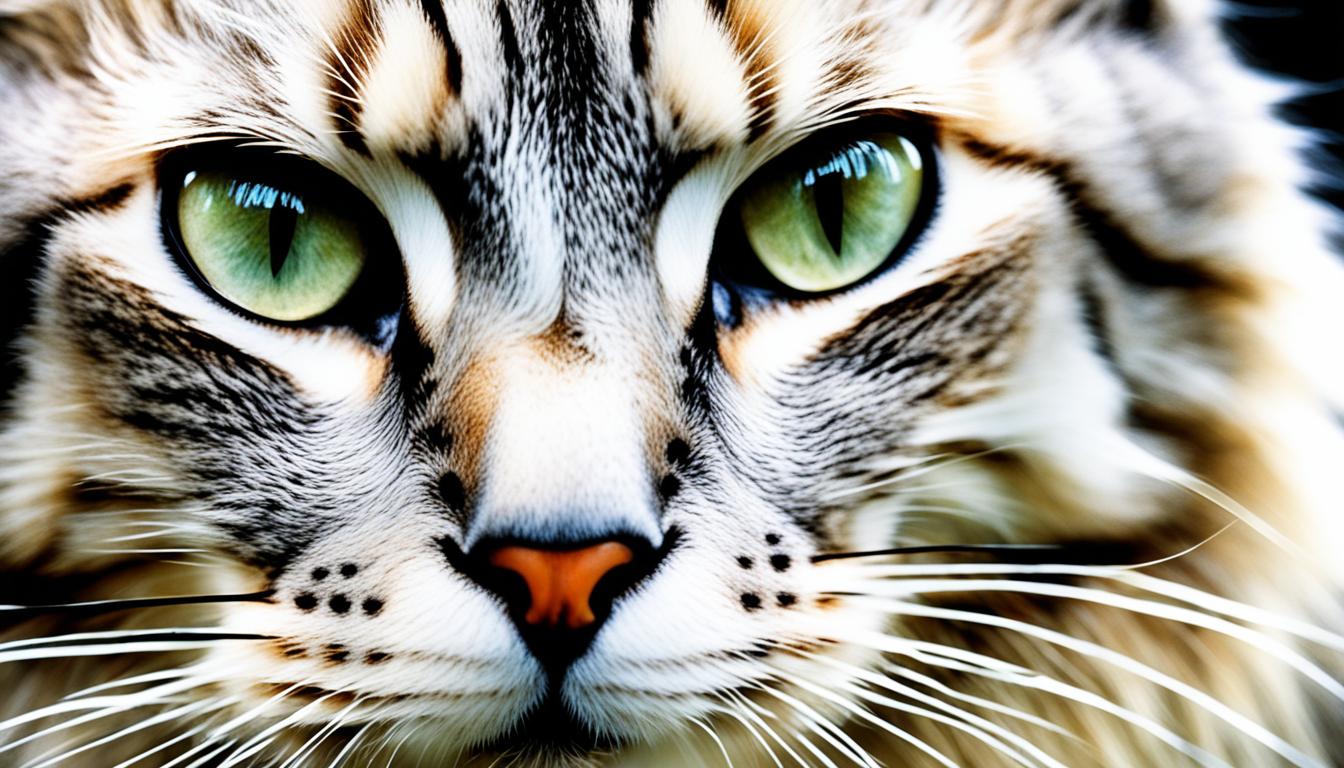As an Amazon Associate I earn from qualifying purchases.
Sometimes, late at night or during busy days, we notice our cat’s deep eyes. This makes us wonder, can cats cry? This question stays with us during quiet moments. When it’s calm, you might think you hear a cat cry. Yet, is this the same as humans crying emotionally? Understanding cats is challenging, just like unraveling a mystery. Their emotions don’t show through tears but through other signs. These signs range from small body movements to their distinct sounds.
When you explore your cat’s feelings, you see they don’t use tears to show sadness. Instead, they change their behavior or make different sounds. Studying their facial expressions and meows offers deep insight. Truly getting this takes more than a quick look. It needs time and caring effort.
As you learn more about how cats communicate, your questions start to get answers. Questions like whether cats cry or feel emotions like we do. Through your care and attention, you realize cats express themselves differently. They might not have human-like tears, but they show a wide range of feelings. These feelings include happiness, fear, anger, and calmness. To really understand this, we must feel it, not just see it.
Key Takeaways
- Cats do not cry emotional tears like humans but communicate through a variety of other cues.
- A deeper understanding of feline emotions is possible through close observation of cat expressions and behavior.
- Changes in vocalization, such as a cat crying sound, often signify distress or discomfort.
- Recognizing the nuances in cat’s behaviors and vocalizations can help us better empathize and connect with them.
- Strong emotional connections with our feline companions are forged through interpreting the subtleties of their communication.
Peering Into the Feline Mind: Understanding Cat Emotions
Have you ever wondered about your cat’s strange behaviors? Like why do cats cry or show other peculiar reactions? It’s easy for cat owners to misinterpret their pet’s emotions. This can make them worried and unsure. Cats do show their feelings, but they do it differently than humans. By learning how cats express their cat’s feelings, we can create a stronger bond with them.
Could It Be Joy or Anger? Deciphering a Cat’s Feelings
If your cat is happy, they might purr. This sound usually means they’re feeling good. But remember, purring can sometimes mean they’re hurt or uncomfortable. It’s important to understand why they’re purring. A happy cat may also knead their paws or come to you for love. This means they feel good and want some affection.
On the other hand, if a cat hisses, it’s showing it’s upset or scared. When cats are frightened or mad, they might make themselves look bigger. They do this by arching their backs or flattening their ears. These signs help us tell if they’re just playful or really stressed.
From Purring to Hissing: The Many Sounds of Cat Emotion
Cats make different sounds to show how they’re feeling. From the happy purring to the angry hissing, each noise means something. Even meowing can tell us a lot. The tone of the meow can say if they’re hurt, hungry, or just saying hello.
| Emotion | Sound | Associated Behavior |
|---|---|---|
| Contentment | Soft purring | Kneading, relaxed posture |
| Playfulness | Chirping | Bouncing, light pouncing |
| Fear/Anxiety | Hissing, growling | Ears back, fur standing on end |
| Pain/Discomfort | Loud meowing, yowling | Retreating, lack of appetite |
Understanding your cat’s sounds can really help their happiness. Instead of just wondering why do cats cry, think about what they’re trying to tell you. The better we understand our cats’ feelings, the better we can care for them. They might need fun playtime or just a calm place to be alone.
Investigating the Phenomenon: Can Cats Cry?
Many people wonder if cats can cry like we do. They ask, “do cats cry tears?” It looks like cats might cry when they’re upset, but they’re really different from us. Cats don’t cry with tears when they’re sad. But, if a cat’s eyes are watery, it might have a health issue, not be sad.
Owners sometimes think their cat is crying when its eyes are watery. But this can actually be a sign of things like conjunctivitis or allergies. If you see excessive tearing in cats, it’s best to check with a vet. It’s important to know the difference between a sick cat and the myth that cats can cry like us.

Looking after your cat’s health is really important. Paying close attention can help you catch illnesses early. Here’s a table that shows the difference between a cat being sad and being sick:
| Emotional Distress Signs | Physical Health Symptoms |
|---|---|
| Hiding or avoidance behavior | Clear or colored discharge from the eyes |
| Changes in vocalization pattern | Redness or swelling around the eye area |
| Altered feeding or eating habits | Excessive blinking or squinting |
| Agitation or aggression | Pawing at the eyes or face |
Each cat is different and shows discomfort in its own way. Remember, it’s not about if cats can cry like us. It’s about understanding why a cat’s eyes might water. This helps us keep them happy and in good health.
The Language of Tail and Whiskers: Feline Body Language Decoded
If you have a cat, you know they have their own special way of communicating. Cats don’t talk like we do. Instead, they use their body language to express themselves. When you understand their feline body language, you can figure out what they’re feeling. This includes the meaning behind the movements of their tails and whiskers.

Understanding the Flicks and Twitches: What Is Your Cat Saying?
Cats use their tails to communicate a lot. The position of their tail can show you how they’re feeling. When a cat’s tail is up, they’re usually happy or confident. But, if their tail is hidden under their body, they might be scared or nervous.
| Tail Position | Emotion | Description |
|---|---|---|
| High and erect | Confident | The cat feels secure and in control of their environment. |
| Low or tucked under | Submissive or fearful | Suggests a feeling of trepidation or discomfort. |
| Puffed up | Scared or agitated | The cat is experiencing intense fear or might be aggressively defensive. |
| Gently swaying | Relaxed or content | A sign that your cat is in a good mood and feeling happy. |
| Flicking or twitching tip | Irritated | An indicator that your cat may be annoyed or impatient. |
Can a Cat’s Pupils Reveal Their Emotions?
Cat tail language can tell us a lot, but so can their eyes. A cat’s pupils change based on how they feel. Big, wide pupils could mean they’re ready to play or are surprised. On the other hand, small pupils might mean they’re upset or ready to fight. But don’t forget, light also affects their pupils. They get bigger in dim light and smaller in bright light.
- Fully dilated pupils: Fear, excitement, or playfulness.
- Constricted pupils: Aggression or focus on a specific object or task.
- Normal pupils: Contentment and relaxation.
Knowing about cat’s pupils and feline body language helps us understand our cats better. If we pay attention to these signs, we can respond better to what they need. This way, we can build a stronger friendship with our cats.
How Cats Express Distress: Beyond Cat Crying Sounds
If you’ve ever heard cats crying at night, you know it’s a curious sound. It’s a myth that cats cry like humans when sad. But, experts say they do show when they’re upset in other ways. For instance, if your cat hides more or eats less, it might be their way of saying they’re not okay. Do cats cry out in pain? They might not shed real tears, but they do “cry.” Look for odd meowing or different sounds that suggest they’re not feeling well.
Stress in cats can show up in their daily life changes. Maybe your cat is grooming too much. This is how they try to calm down when stressed. Or, you might see them not eating like usual. This could be a sign they’re either upset or not feeling well. Think of these changes as your cat asking for help without words. Spotting and understanding these signs mean you can help your cat feel better sooner.
Knowing how your cat feels is crucial. Whether it’s a new behavior or a new way they “talk,” these signs are important. This knowledge helps you care for them better. You can comfort them, take them to the vet, or just give them a quiet spot to relax. Paying attention to how they express feeling sad or sick can make your friendship even stronger.
How Cats Express Distress: Beyond Cat Crying Sounds
Can cats cry?
What do different cat expressions mean?
Is my cat’s crying sound an emotional response?
Could It Be Joy or Anger? Deciphering a Cat’s Feelings
From Purring to Hissing: The Many Sounds of Cat Emotion
Do cats cry tears?
Can cats cry like humans?
Understanding the Flicks and Twitches: What Is Your Cat Saying?
Can a Cat’s Pupils Reveal Their Emotions?
Why do cats cry at night?
Do cats cry when in pain?
Can cats cry emotionally?
What does cat crying behavior indicate?
As an Amazon Associate I earn from qualifying purchases.

